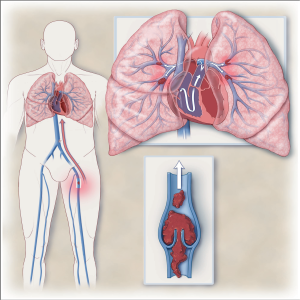Blood clot malpractice occurs when doctors fail to diagnose and treat blood clots, especially when blood clots cause death or brain damage. Blood clots can clog the lungs (“pulmonary embolism,” or “pulmonary emboli”) and cause shortness of breath or difficulty breathing, especially when the breathing problem happens suddenly (usually over a day or two), and when it becomes hard to breath even when resting. Other symptoms of blood clots in the lungs can include chest pain and coughing.
Blood clots can kill. Doctors who fail to diagnose blood clots in lungs may be committing medical malpractice if they misdiagnose a patient or fail to order the right tests and treatment. As a Registered Nurse and experienced Trial Attorney, Marjorie Chalfant has been extremely successful in representing many malpractice patients and their families over the last 22 years. The Nurse Attorney has extensive experience with blood clot malpractice.
In most cases, a clot forms somewhere in the body (often in the legs), and breaks loose and travels to the lungs, where it blocks the flow of oxygen to the blood. The patient literally suffocates and often dies if the clot is very large (sometimes referred to as a “saddle embolus”), or if there are many blood clots in the lung. In some cases, people can survive blood clot malpractice, but may have suffered permanent heart or brain damage from lack of oxygen.
In Marjorie Chalfant’s experience with blood clot malpractice, the most frequent misdiagnosis is either “upper respiratory infection” or “bronchitis.” Other mistaken diagnoses include “anemia,” “chest congestion,” “emphysema,” and “COPD (Chronic Obstructive Pulmonary Disease).” Sometimes, patients can have both a “chest cold” and blood clots in lungs at the same time.

